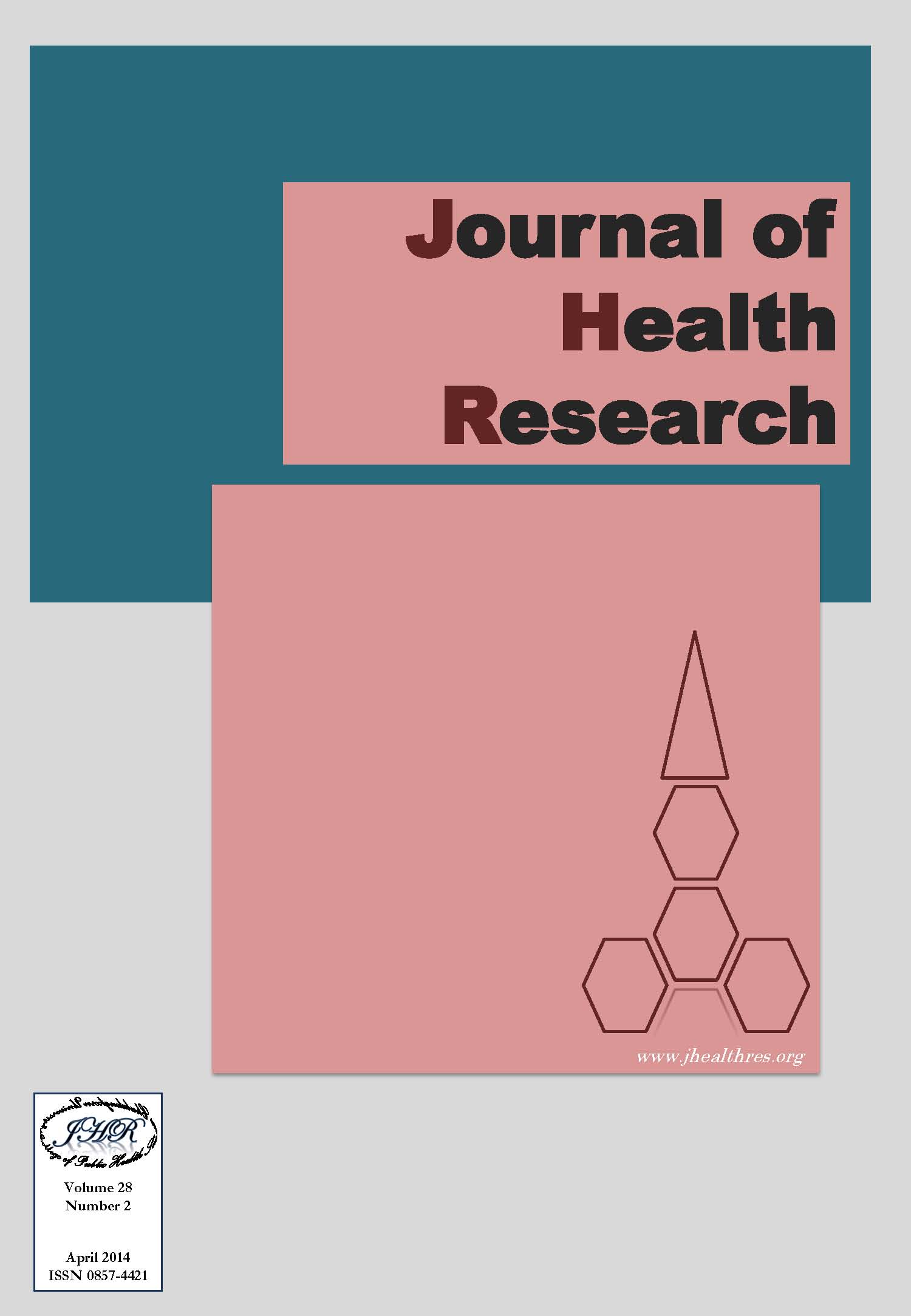Health Seeking Behaviors in Influenza-Like Illness among Healthcare Providers in Angthong Province, Thailand
Keywords:
Health seeking behavior, Influenza-like illness, Healthcare providersAbstract
This cross-sectional study aimed to describe and determine relationships between influencing factors and health seeking behaviors (HSB) in influenza-like illness (ILI) among 290 doctors, dentists, and nurses in seven hospitals in Angthong during February to March 2013. Simple random sampling and structured questionnaire were used. Most of respondents were between 35 - 50 years old and 92.8% were female. They were nurses 84.8%, physicians 7.6%, and dentists 7.6%. Sixty-five (22.4%) had underlying disease and one hundred eleven (38.3%) had ILI during the past 3 months. Hand washing was the most common practice they used when they worked (97.6%) and always wearing gloves 74.5%. Annual checkup was performed 92.4%. Television was the most common mass media used (205, 70.7%). Forty two point five percent were more confident to take care themselves when got ILI. The prevalence of influenza vaccination in 2012 was 67.9%. They were aware more about influenza transmission to their patients (228, 78.6%) and 233 (80.3%) thought influenza vaccination were a part of their responsibility. One hundred sixty (55.2%) had basic knowledge regarding influenza infection. Inappropriate HSB and their influencing factors were concluded as follows; do nothing was significantly associated with male, aware of influenza transmission to patient, using PPE, and time since the most recent ILI. Male were more likely to do this HSB than female (OR= 10.09, p-value<0.001, 95%CI 3.122-32.612). Self-medication without suggestion; High score of knowledge regarding reason for staying at home was less likely to do this HSB than low score (OR= 0.86, p-value<0.015, 95%CI 0.764-0.971). Appropriate HSB and their significant influencing factors were concluded as follows; Self-medication with suggestion was significantly associated with using PPE, perception score, and time since the most recent ILI. High rate of using PPE (perceived susceptibility) was more likely to do this HSB than low rate (OR= 1.29, p-value<0.016, 95%CI 1.049-1.582). See doctor was associated with male, married (ref=single), knowledge regarding cause of ILI, exposed to mass media, and perception score. Exposed to mass media was more likely to see doctor than unexposed (OR= 2.89, p-value<0.005, 95%CI 1.279-6.521). Likewise, rest at home was significantly associated with knowledge regarding how to prevent seasonal influenza and dentist (ref= doctor). Dentist was more likely to rest at home than doctor (OR= 8.50, p-value<0.014, 95%CI 1.549-46.611).







